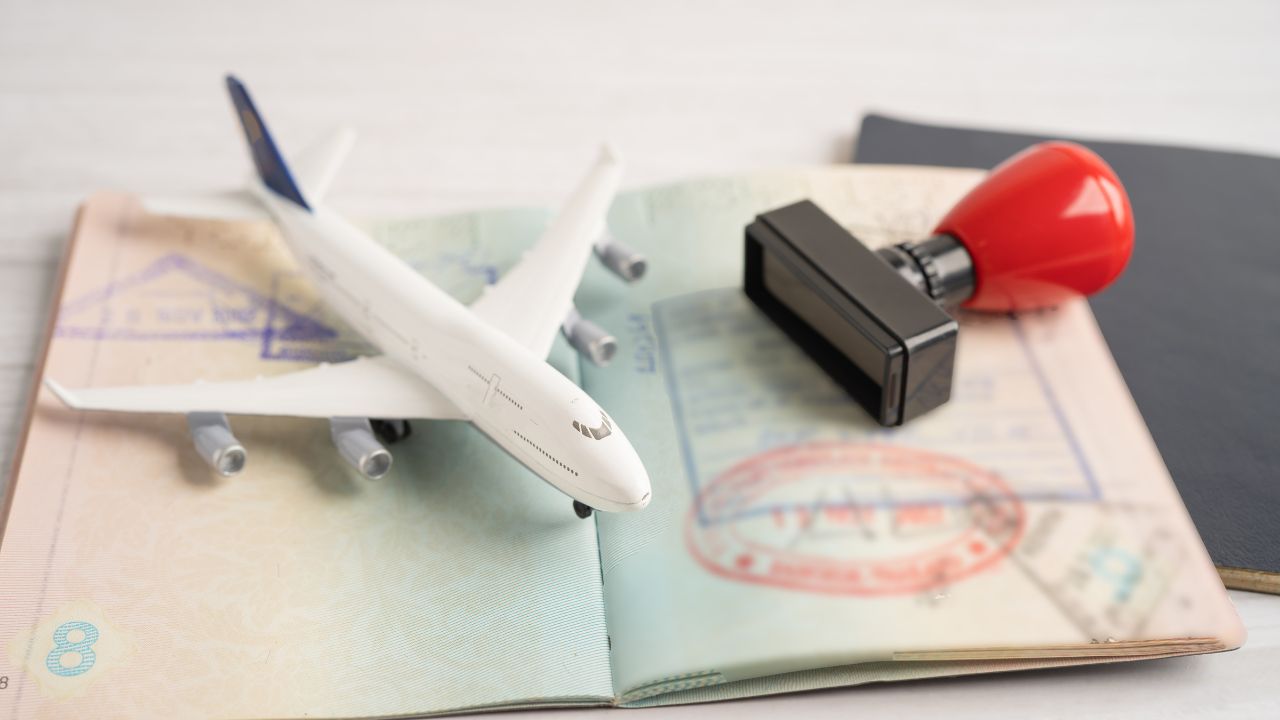The H-1B visa is a nonimmigrant work visa that allows U.S. employers to temporarily employ foreign workers in specialty occupations that require theoretical and practical application of a body of highly specialized knowledge and a bachelor’s degree or higher in the specific specialty (or its equivalent).
The H-1B visa program is managed by the U.S. Citizenship and Immigration Services (USCIS). Each year, USCIS issues a limited number of H-1B visas, which are awarded on a first-come, first-served basis.
To be eligible for an H-1B visa, a foreign worker must have a job offer from a U.S. employer for a specialty occupation and must meet the following requirements:
Hold a U.S. bachelor’s degree or higher degree in the specific specialty (or its equivalent).
Have the theoretical and practical application of a body of highly specialized knowledge in the specific specialty.
Demonstrate that the position requires a bachelor’s degree or higher degree in the specific specialty (or its equivalent).
The H-1B visa is valid for a period of three years, and it can be extended for a maximum of six years. H-1B visa holders may also be eligible to apply for permanent residency in the United States.
The H-1B visa program is an important part of the U.S. economy. It allows U.S. employers to hire skilled foreign workers in specialty occupations that are in high demand, such as science, technology, engineering, and mathematics (STEM).
Here are some examples of jobs that may qualify for an H-1B visa:
Engineer
Scientist
Software Developer
Accountant
Architect
Doctor
Nurse
Lawyer
Teacher
Professor
Researcher
Manager
Executive
What is the H1B lottery?
The H-1B lottery is a random selection process used by the United States Citizenship and Immigration Services (USCIS) to allocate H-1B visas. The H-1B visa is a nonimmigrant work visa that allows U.S. employers to temporarily employ foreign workers in specialty occupations that require theoretical and practical application of a body of highly specialized knowledge and a bachelor’s degree or higher in the specific specialty (or its equivalent).
Each year, the USCIS receives more applications for H-1B visas than the number of visas available. To address this oversubscription, the USCIS conducts a lottery to randomly select applications from the pool of eligible applicants.
The H-1B lottery process is open to both U.S. employers and foreign workers. U.S. employers must first submit an electronic registration for each foreign worker they wish to sponsor for an H-1B visa. The registration period typically opens in March and closes in April.
Once the registration period has closed, the USCIS conducts the lottery to randomly select applications. Selected applicants will be invited to file a full petition for an H-1B visa. The petition must be filed within 90 days of the selection date.
If the USCIS approves the petition, the foreign worker will be granted an H-1B visa. The H-1B visa is valid for a period of three years, and it can be extended for a maximum of six years. H-1B visa holders may also be eligible to apply for permanent residency in the United States.
The H-1B lottery is a competitive process, and the odds of being selected are relatively low. In recent years, the chances of being selected have been around 25%.
The H-1B lottery typically happens every year in March. The USCIS opens the registration period for the lottery in early March, and it closes in early April. The lottery is then conducted in late March or early April, and selected applicants are notified of their selection.
The total number of H-1B visas that are issued each year is 85,000. This number includes 65,000 visas for foreign workers who have never received an H-1B visa before and 20,000 visas for foreign workers who have already received an H-1B visa and are seeking to extend their stay in the United States.
In addition to the 85,000 regular H-1B visas, the USCIS also issues 20,000 H-1B visas to foreign workers who have a master’s degree or higher degree from a U.S. university. These visas are known as H-1B master’s degree cap visas.
The H-1B visa program is an important part of the U.S. economy. It allows U.S. employers to hire skilled foreign workers in specialty occupations that are in high demand, such as science, technology, engineering, and mathematics (STEM).
Here are some tips for increasing your chances of being selected in the H-1B lottery:
- Submit your registration early. The earlier you submit your registration, the better your chances of being selected.
- Have your employer submit multiple registrations on your behalf. U.S. employers are allowed to submit multiple registrations for each foreign worker they wish to sponsor for an H-1B visa.
- Submit a complete and accurate registration. Make sure that you have answered all of the questions on the registration form correctly and completely.
- Have your employer file a strong H-1B petition. The H-1B petition must demonstrate that the position requires a bachelor’s degree or higher degree in the specific specialty (or its equivalent) and that the foreign worker has the necessary qualifications for the position.
The H-1B filing cost breakdown is as follows:
- Base filing fee: $460
- Fraud prevention and detection fee: $500
- ACWIA fee: $750 (for companies with 25 or fewer employees) or $1,500 (for companies with more than 25 employees)
- Premium processing fee (optional): $2,500
The total cost of filing for an H-1B visa can range from $1,710 to $6,460, depending on the size of the company and whether or not the employer chooses to pay the premium processing fee.
Here is a breakdown of the different fees:
- Base filing fee: The base filing fee is paid to the USCIS to process the H-1B petition.
- Fraud prevention and detection fee: The fraud prevention and detection fee is paid to the USCIS to help prevent fraud and abuse in the H-1B visa program.
- ACWIA fee: The ACWIA fee is paid to the Department of Labor to help fund education and training programs for U.S. workers.
- Premium processing fee (optional): The premium processing fee is paid to the USCIS to expedite the processing of the H-1B petition.
The USCIS also charges a number of other fees related to the H-1B visa program, such as the I-129CW fee and the I-539 fee. However, these fees are not typically included in the H-1B filing cost breakdown.
Employers are generally responsible for paying the fees associated with filing for an H-1B visa. However, there are some cases in which the employee may be required to pay some or all of the fees.
If you are considering applying for an H-1B visa, you should consult with an immigration attorney to discuss your eligibility and options.
Here is a list of the top 20 employers filing for H-1B visas from the last 5 years:
- Amazon
- Cognizant Technology Solutions
- Microsoft
- Tata Consultancy Services
- Ernst & Young
- Infosys
- Meta Platforms
- Deloitte Consulting
- Amazon Web Services
- Apple
- Intel
- Capgemini
- Walmart
- JPMorgan Chase
- HCL America
- Accenture
- Qualcomm Technologies
- Wipro
- Compunnel Software Group
This list is based on data from the U.S. Department of Labor. It is important to note that this list only includes employers who filed for at least 1,000 H-1B visas in each of the last 5 years.
The H-1B visa program is a nonimmigrant work visa that allows U.S. employers to temporarily employ foreign workers in specialty occupations that require theoretical and practical application of a body of highly specialized knowledge and a bachelor’s degree or higher in the specific specialty (or its equivalent).
The H-1B visa program is an important part of the U.S. economy. It allows U.S. employers to hire skilled foreign workers in specialty occupations that are in high demand, such as science, technology, engineering, and mathematics (STEM).
You can check H-1B data from USCIS on the following websites:
- USCIS H-1B Visa Data Hub https://www.uscis.gov/tools/reports-and-studies/h-1b-employer-data-hub
- USCIS H-1B Cap Count https://ogletree.com/insights-resources/blog-posts/uscis-releases-data-with-official-number-of-fy2022-h-1b-cap-registrations/
- USCIS H-1B Processing Times https://egov.uscis.gov/processing-times/
The USCIS H-1B Visa Data Hub provides data on H-1B visa applications, approvals, and denials. The data is available for download in CSV and JSON formats.
The USCIS H-1B Cap Count provides data on the number of H-1B visa applications received by USCIS for each fiscal year.
The USCIS H-1B Processing Times provides data on the average processing times for H-1B visa applications.
You can use this data to track trends in H-1B visa applications and approvals and to estimate the processing times for H-1B visa applications.
Here are some tips for using H-1B data from USCIS:
- Use the data to identify trends in H-1B visa applications and approvals. This information can be helpful for employers who are planning to file for H-1B visas for their employees.
- Use the data to estimate the processing times for H-1B visa applications. This information can be helpful for employers and employees who are waiting for a decision on an H-1B visa application.
- Use the data to compare different employers who file for H-1B visas. This information can be helpful for foreign workers who are considering which employer to work for.
Please note that the H-1B visa program is a complex program, and the data on the USCIS website should not be used to make legal or immigration decisions. If you have any questions about the H-1B visa program, you should consult with an immigration attorney.






